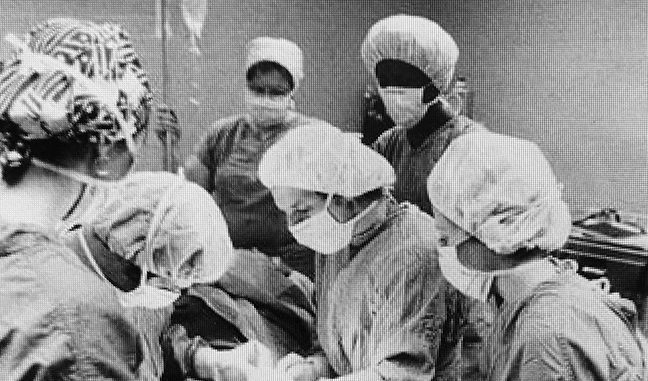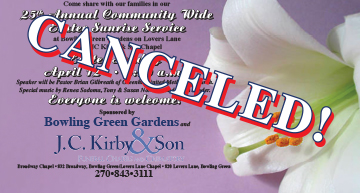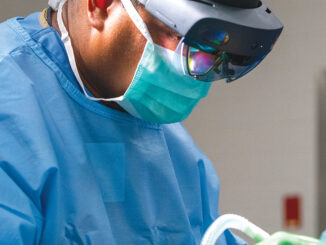
I stood by the bed holding the hand of my gracious grandmother as she slowly allowed her life to fade. Moments before I had been outside the corner room viewing the parking lot through the hall window when she called. She said it is time to go see Curtis and slowly her earthly body released her soul. I had stood holding my grandfather’s hand only a few months before as he made his decision. At first he fought it because Emma would not be with him, but acceptance came slowly and he allowed his earthy body to relax.
The setting for this moment of reminiscing was the beloved City Hospital in Bowling Green, KY. It was a jewel of the community and an envy of surrounding areas. The three-story brick building was built on the northern shank of Reservoir Hill overlooking the town center. When it was built in 1926 with city taxes and maintained by city taxes, it was a symbol of a growing, progressive city.
The original building had only thirty-five beds and it was evident from the start it was not big enough to house the demand of patient needs. The hallways housed many of the patients with the help of movable screens. The hospital management served all people, turning no one away regardless of age, race, financial ability, or residence. It was an oasis of nurturing care and the pride of all who worked there.
The hospital contained most departments needed: emergency room, two operating rooms, X-ray department, maternity ward, laundry, main food center with smaller kitchens on each floor, and a host of office business centers. Even an eye, ear, nose, and throat clinic existed. Designed by Bowling Green architect R.E. Turberville, it was most efficient but proved to be too small for the growing needs of the city.
In 1946, Warren County Fiscal Court donated land behind the hospital to allow it to expand. The added construction increased the bed capacity to 125 beds and the name of the facility changed to Bowling Green-Warren County Hospital. The nearby house used by nurses was removed and expansion continued to exist. New offices, a coffee shop for workers and visitors, an enlarged lobby, prayer rooms, class and conference rooms, and nursing units on each floor enhanced all appeared by 1950. To the delight of many, a coronary unit and a hospital-run ambulance service were added in 1969 and 1971.
The addition of more office space and an area to accommodate long-term patient care was in demand. Also needed in 1972 was a physical therapy clinic. Growth was primary. Bowling Green had become the dominant city in South Central Kentucky and definite change was needed.
In 1975, John Desmarals, the hospital administrator, formed a group called CHC (Commonwealth Health Corporation) to study the urgent needs of medical services. The group recommended the hospital change from a public institution to a non-profit organization. Expansion was not possible with local taxes alone supporting its advances. Result was the formation of The Bowling Green-Warren County Hospital Corporation in 1977. The newly formed group continued to manage the present facility while designing and planning a newer, more modern medical center to meet the demands of a flourishing community. In March 1980, CHC opened The Medical Center located at First and Park Street near the By-Pass.
The new hospital, with its expanded services, has made the city one of the leading medical facilities in the state. With its continuous growth pattern, it provides the area with leading professional staff recognized far and wide. It makes city residents proud and feeling in good hands medically but old timers still express their love for the old hospital as they reflect on past memories.
Individuals with whom I discussed the subject radiated fondness for their services. The old farmer told of how the ambulance came all the way down to Riverside and took him to the hospital. Another related the story of the removal of her tonsils, the first time she was ever in a hospital. One lady remembers the music playing in honor of the birth of a child she had just experienced. Several nurses relate when the city had its massive snowstorm and the National Guard delivered the nurses back and forth to their work. They all seem so proud to have worked at the City Hospital. Some elderly folks can take you on a tour of the place with their vivid description of all the area of the grounds. They speak with a love for the old hospital because they remember when it was first built and the excitement the community felt, the pride they had in their city.
The original city hospital building still exists. The parking lot is full like it was in the past but the personnel in the building have changed from administering health care to managing health care. Some of the CHC offices are located in the space now.
Changes in the physical characteristic of the local medical service have, in the past, changed with new demands and new innovations. The physical changes are expected but the city still enjoys the same quality of service it has always received. The hospital plant has grown but the love and caring qualities of its mission remain the main focus. Isn’t it great to live in Bowling Green?!
-by Mary Alice Oliver
About the Author: Mary Alice Oliver is a Bowling Green native who is a 1950 graduate of Bowling Green High School. She retired from Warren County Schools after 40 years in education. Visiting familiar sites, researching historical records and sharing memories with friends are her passions.






